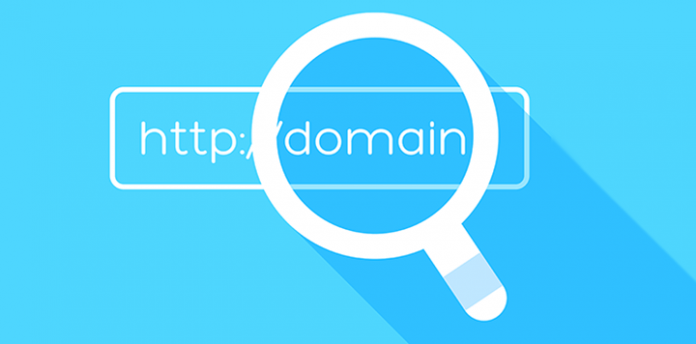This article is written by Sharad Yadav from the Institute of Law, Nirma University. This article will help you to understand the dispute which generally arises due to the domain name
Table of Contents
Introduction
Today in the era of the internet and technology we go through various websites to look for something. The name of the person is very important for their identity and in the same way domain name for a company is very important. If someone uses a similar or confusing domain name of a company then it might create a big problem for a company in terms of profit and goodwill. After reading the article you will be able to understand the common issue which generally arises related to the domain name.
Domain name
A domain name is like the address or phone number of someone. It is a combination of various typographical characters which are used to describe a location online. Sometimes it is also called a URL(Uniform Resource Locator). A domain name is very important for any type of business that wants to sell its product online. Two organizations can never have the same domain names for example www.facebook.com, www.yahoo.com, etc. In this example
- World Wide Web (www) means that the site is linked with the world wide web.
- .COM is a type of TLD (Top Level Domain). It tells us the service behind the domain name.
The most common Top-level domains which you have seen generally in the websites are (.com,.org,.net) These are some general TLDs that don’t require any web service to meet any particular criteria. But after seeing some TLDs you will be able to know the service they provide for example (.edu). It is only used for educational purposes on websites. Some TLDs for example (.us,.in,.fr) are the local TLDs that are supported to indicate the resources of the particular country. Some TLDs like (.gov) show that operated by the government and only government departments can use such types of domains.
The maximum length is 63 characters but most are around 2-3. It can be special as well as Latin characters also.
Types of domain name disputes
As known, acquiring a domain name for a particular organization is very important if that organization wants to operate its business online also. Domain name disputes are of various types like cyber squatters, typosquatting, domain name warehousing, cyber twin, reverse domain name hijacking.
Cybersquatting
Cybersquatting can also be referred to as domain squatting. Cybersquatting is a practice in which a person registers a domain name that resembles a well-known organization without authorization to gain some profit. Domain registrants buy the domain name with a mala fide intention that harms the goodwill and reputation of the company. This is mainly done to gain some profit by selling the domain name to the owner of the original trademark or service. Sometimes a person registers the name and expects that he will sell the domain name in the future to the highest bid.
Typosquatting
A typo squatter refers to a person who registers a domain name with common typos of the company’s primary domain name to shift the traffic from the main website to its website. Let’s understand this by taking an example to suppose a person registers a domain with the name www.faceook.com which is created to shift the people from the original site www.facebook.com. This practice is also known as “URL hijacking” or sometimes “web address hacking.”A person takes advantage of common typing mistakes which people make while entering any URL.
Cyber twin
Cyber twin refers to when the domain name holder and the person challenging the domain have a legitimate claim to a domain name. In the case before WIPO arbitration and mediation centre name Indian Farmers Fertiliser Cooperation Ltd v. International Foodstuffs Co, (2018), the issue was related to the domain name iffco.com.In this particular case, the defendant was using the domain name in good faith. The complainant had a legitimate interest in the domain, which was related to iffco.com. The complainant stated that the defendant was diverting the traffic. The arbitration centre dismissed the case and said that both parties had a legitimate interest and the complainant had failed to prove that the defendant was using the domain name in bad faith.
Domain name warehousing
Domain name warehousing is holding the expired domain instead of releasing back to the public for buying. A person contains a certain domain from being registered and hopes to resell to the previous owner or new owner at a much higher price than the market price. They may try to negotiate to sell at a higher price.
Reverse domain name hijacking
RDNH stands for Reverse domain name hijacking (RDNH) is an attempt by the trademark holder in bad faith to take control of a domain name from another who is having a legitimate interest in the name. According to the Rules15(e) of Uniform Domain-Name Disputes Resolution Policy (UDRP), it has been stated that when any complainant is brought in bad faith which is primary to harass the domain name registrant, then the panel can decide that the complaint is brought in bad faith and constitutes an abuse of administrative proceeding. Reverse domain name hijacking is mostly enacted by large corporations and individuals, in defence of their rightful trademark or for preventing libel or slander.
ICANN’S UDRP
As we all know, the internet, which we know today, began as the network known as ARPANET(Advanced Research Projects Agency Network, experimental computer network). Internet Assigned Numbers Authority (“IANA”) managed the internet by assigning the computer to the internet as an address. Some bodies see there was the expansion of the internet Network Solutions, Inc( NSI), which was the private company that received the right to assign the domain address. One of the ICANN’s first substantive acts was the adoption of UDRP, which had three main objectives:
- Eliminate the jurisdiction and the problem of the conflicting law related to all internet disputes.
- Reduce the cost of bringing suits against the cybersquatters.
- Apply an extremely restricted set of circumstances only to the egregious cases.
As UDRP incorporates all registration agreements for .org,.com,.net.If anyone wants to file a suit in UNDP, it is very simple. Firstly the complaint must be filed in one of the alternative dispute resolution bodies which are approved by the ICANN. The respondent gets a 20 days timeline to file a reply, after which a three-member committee is formed in which the plaintiff has to prove three elements:
- That the disputed domain name is similar or confusing
- That the respondent is not having any legitimate interest in the domain
- That the respondent registered the domain name in bad faith.
There is a major advantage of using ICANN’s UDRP to resolve domain name disputes is that it has a fast preceding. Most of the decisions of UDRP are handed down within 45 days of the complaint being filed. Giving quick decisions is the primary reason for using UDRP.
Legislation governing domain name in India
There is no specific law related to the domain name in India, but domain name cases are decided under the Trade Marks Act, 1999.
Starbucks Corporation v. Mohanraj (2009)
This case was related to the domain name in which domain www.Starbucks.co.in was very similar to the complainant www.starbucks.in. It is contended by the complainant that the response is not having any legitimate interest in the domain name and using it in bad faith.
While the respondents stated that at the time of registration the registrar(.in) did not ask for any document to show for registration of trade and also said before the court that the complainant had neglected the domain name dispute for four years and .co.in was available for use before .in extension was released. In response to the argument given by the respondent, the company stated that the mere fact that at the time of registering the domain with the name www.starbucks.co.in the .in registry did not ask anything did not bestow upon him any absolute right to use the said domain. The complainant also stated before the arbitrator that he has traded considerably the bonafide right to use the registered trademark Starbucks and the respondent is not having any legitimate interest in the said domain.
The learned arbitrator, after hearing the arguments of both the complainant and respondent, held that the disputed domain name is very similar and confusing to the complainant, and they had the right to the trademark. While answering the question of legitimate interest, it was held by the arbitrator that the respondent did not provide any positive and cogent reason to prove a legitimate interest in the said domain neither provided any evidence for same therefore respondent had got the domain name registered in bad faith and held that domain name to be transferred to the complainant(Starbucks).
Google Inc. v. Gulshan Khatri (2017)
In this particular case, a complaint was filed to challenge the registration of the domain name ”googlee.in”. In the complaint, it was stated that the respondent domain name is conceptually, visually identical to the complainant domain name and the respondent tries to ride on the goodwill of the complainant which is built over the years. It was contended by the complainant that the responded domain name”googlee.in” appeared immediately connected with the complainant. It was also contended that the domain name is used for the search engine and would likely perceive the mind of the public and going to create confusion in the mind of the public. The respondent registered the domain in the year 2007 while the complainant domain name “google.in” was registered and serving the market way back from the year 1997.
The arbitrator in the present case stated the domain name”googlee.in” was identical to the prior registered domain name and directed the registry to cancel the said domain name and transfer the said domain in favour of the complainant.
Aqua Minerals Limited Vs. Mr. Pramod Borse & Anr (2001)
In this particular case, the Hon’ble High Court of Delhi ruled that Unless and until a person is having a credible explanation as to why he choose a specific name for registering a domain or for that purpose as a trading name that already existed in the market for a long time and had established its outstanding reputation and goodwill there is no other inference to be drawn than that the said person wanted to trade in the name of the trade name he had picked up for registration or as a domain name because of its being an incorporated name with huge reputation and goodwill which is achieved at after incurring the huge cost and which is involved in the advertisement of the company.
Conclusion
As a result, it can be inferred that a company’s domain name is significant. Some bodies see the disputes relating to the domain, but if we see it in India or many developed countries, there is not any particular law that protects the domain name. People usually register the domain names of well-known organizations to get benefits from the holding domain, and similar domains cause havoc in society. As more and more people are connecting to the internet, we need to strengthen the system to reduce these practices.
References
- https://lexero.com/practices/domain-name-attorney/domain-name-attorney-types-of-domain-name-disputes/
- https://scholarship.law.missouri.edu/cgi/viewcontent.cgi?article=1418&context=jdr
LawSikho has created a telegram group for exchanging legal knowledge, referrals, and various opportunities. You can click on this link and join:
 Serato DJ Crack 2025Serato DJ PRO Crack
Serato DJ Crack 2025Serato DJ PRO Crack











 Allow notifications
Allow notifications



